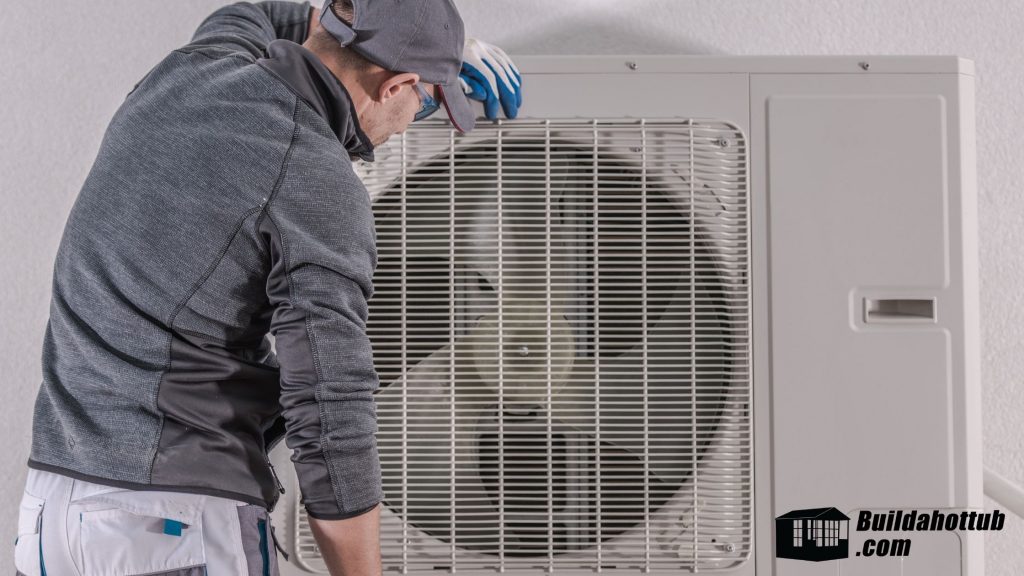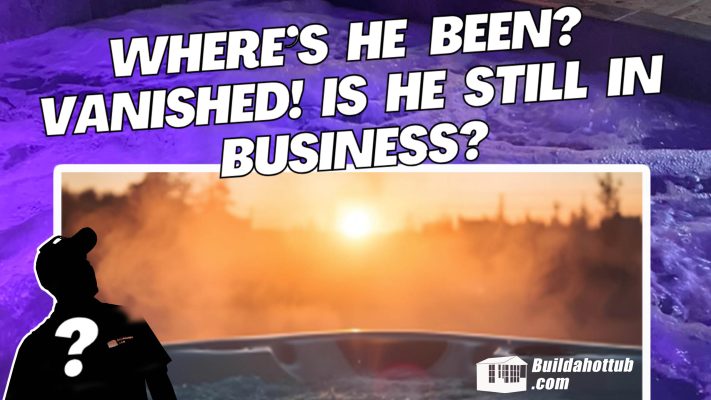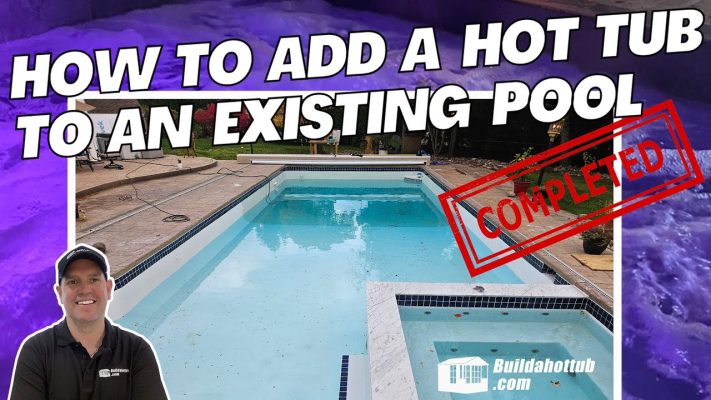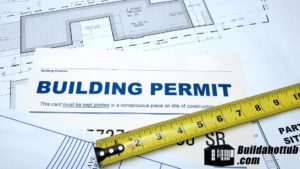Air Source Heat Pumps are becoming increasingly popular for Hot Tubs and Pools. However, what about a ground source heat pump hot tub? If you have one already on your home heating system, can you use this to heat your hot tub? In short, the answer in yes you can and in this article we will explore exactly what you need to do.
What is a Ground Source Heat Pump?
A ground source heat pump (GSHP) is an energy efficient, renewable energy solution that is particularly suited to properties on larger plots. They can be up to 400% more efficient than gas or electric heating. This type of heat pump extracts the free heat from the ground which you can then use for heating your home and your hot water system. A GSHP can also help you to reduce your carbon footprint and can even lower your energy bills.
What are some of the advantages of Ground Source Heat Pumps?
- Incredibly efficient, a ground source heat pump transfers around four times more energy into the property as heat than it uses to extract it from the ground
- MCS approved for the Renewable Heat Incentive (RHI)
- Well-suited to properties on larger plots
- Ground loop or bore hole installation options
- Virtually silent operation
How does a Ground Source Heat Pump Work?
According to which? ground source heat pump systems are made up of a ground loop (a network of water pipes buried underground) and a heat pump at ground level. A mixture of water and anti-freeze is pumped around the ground loop and absorbs the naturally occurring heat stored in the ground.
The water mixture is compressed and goes through a heat exchanger, which extracts the heat and transfers it to the heat pump. The heat is then transferred to your home heating system.
Ground source heat pump uses fluid to absorb heat from the ground. Using electricity, the fluid is compressed and raised to a higher temperature.
Heat is sent to radiators or underfloor heating – the remainder is stored in a hot water cylinder. Stored hot water can be used for showers, baths and taps.
Image Source – Which.co.uk
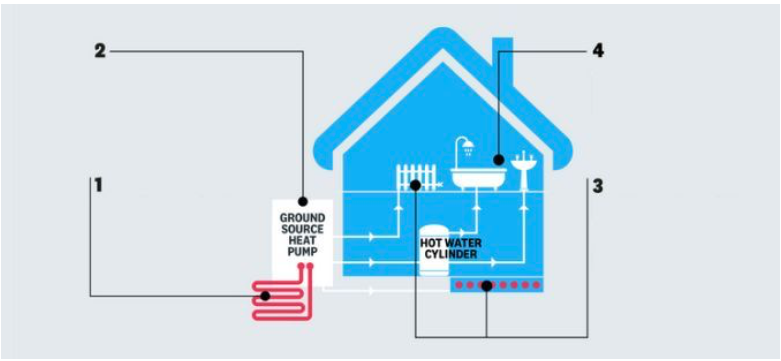
- Ground source heat pump uses fluid to absorb heat from the ground.
- Using electricity, the fluid is compressed and raised to a higher temperature.
- Heat is sent to radiators or underfloor heating – the remainder is stored in a hot water cylinder.
- Stored hot water can be used for showers, baths and taps.
How can we use a Ground Source Heat Pump to Heat our Hot Tubs?
Now that we have understood what a Ground Source Heat Pump is and how it works, it it time to learn how we can use this to heat our hot tubs.
Firstly, you are going to need an additional heating source for your hot tubs? Why I hear you ask? Well, ground source heat pumps in the summer are used to cool our homes too. Therefore, it is working in reverse doing the summer months which means that the chances are, it will be in “cooling mode” rather than heating. Therefore, it would actually cool the hot tub too if we used in in this way.
Secondly, you are going to need a “heat exchanger”. This sounds complicated right? Well, it isn’t. Below is what a heat exchanger looks like.
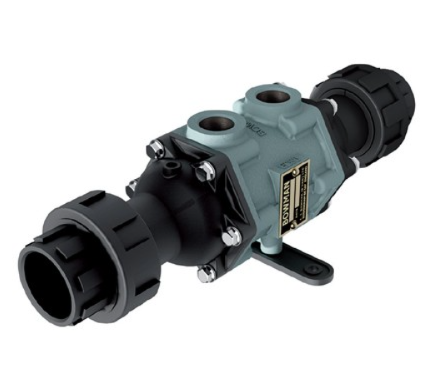
So now we have a heat exchanger, we need to understand its role. The clue is in its name. The principle behind a heat exchanger is that the two bodies of water, your hot water system from your home and your hot tub water, never actually mix.
What happens is that on the top of the heat exchanger, you can see to smaller holes. These are for the hot water system’s pipework. The hot water will circulate around the heat exchanger but at no point will mix with the hot tub water. So how does it heat?
Well, it “exchanges” heat with the hot tub water. When the hot tub water is flowing through the central chamber of the heat exchanger (the black part on the image above) the hot water that is circulating around the blue/green section in its own pipes actually heats the water as it passes by. How cool is that. Not literally of course as the water is hot!
Therefore, when we are plumbing in a heat exchanger, we would put this on the filtration plumbing that will be connected to a secondary heat source, usually electric and it will just flow through the heat exchanger and heat in series.
You are going to want to plumb in a series of gate valves to enable you to isolate the flow through the heat exchanger when it is not needed in the summer months eg when it is cooling. Other than that, it is a pretty simple integration.
The main challenge is tapping into your existing water heating pipework to plumb in the heat exchanger
If you need any assistance with plumbing diagrams for a ground source heat pump for your hot tub, please do get in touch.
Happy Hot Tubbin’
Can I Help You?
If I can help you in any way I would love to hear from you. You can get in touch using the form below.
Thanks - Andi
 Hi, Andi here. I own Buildahottub.com and also write all of the articles and info pages on the site. Some years back now, I built my own hot tub but struggled to find the information I needed. So, once my tub was complete, I started this website to help others in their own pursuit of hot tub and plunge pools DIY building information.
Hi, Andi here. I own Buildahottub.com and also write all of the articles and info pages on the site. Some years back now, I built my own hot tub but struggled to find the information I needed. So, once my tub was complete, I started this website to help others in their own pursuit of hot tub and plunge pools DIY building information.
Fast forward to 2025, I've helped over 1400+ DIY customers just like you all over the world build hot tubs and pools. Have a good look around the site, there are lots of resources here. Please do get in touch if I can help you. - Cheers, Andi

